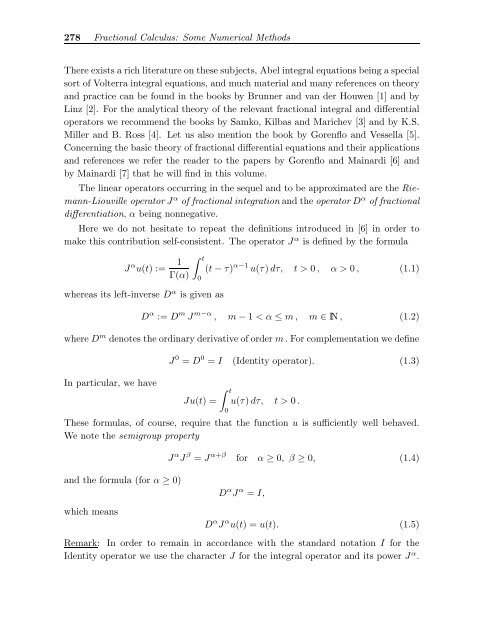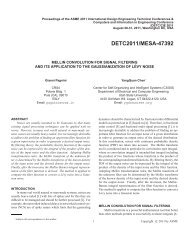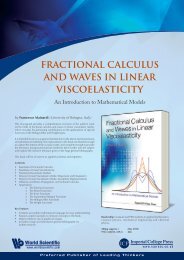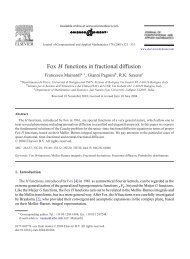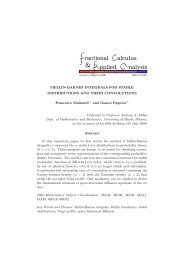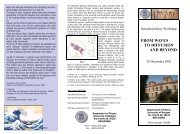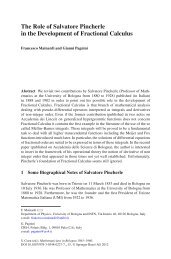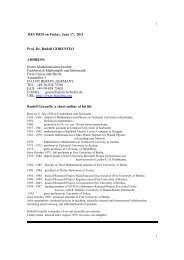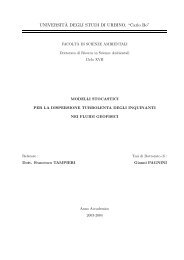CISM LECTURE NOTES International Centre for Mechanical Sciences
CISM LECTURE NOTES International Centre for Mechanical Sciences
CISM LECTURE NOTES International Centre for Mechanical Sciences
You also want an ePaper? Increase the reach of your titles
YUMPU automatically turns print PDFs into web optimized ePapers that Google loves.
278 Fractional Calculus: Some Numerical Methods<br />
There exists a rich literature on these subjects, Abel integral equations being a special<br />
sort of Volterra integral equations, and much material and many references on theory<br />
and practice can be found in the books by Brunner and van der Houwen [1] and by<br />
Linz [2]. For the analytical theory of the relevant fractional integral and differential<br />
operators we recommend the books by Samko, Kilbas and Marichev [3] and by K.S.<br />
Miller and B. Ross [4]. Let us also mention the book by Gorenflo and Vessella [5].<br />
Concerning the basic theory of fractional differential equations and their applications<br />
and references we refer the reader to the papers by Gorenflo and Mainardi [6] and<br />
by Mainardi [7] that he will find in this volume.<br />
The linear operators occurring in the sequel and to be approximated are the Riemann-Liouville<br />
operator J α of fractional integration and the operator D α of fractional<br />
differentiation, α being nonnegative.<br />
Here we do not hesitate to repeat the definitions introduced in [6] in order to<br />
make this contribution self-consistent. The operator J α is defined by the <strong>for</strong>mula<br />
J α u(t) := 1<br />
Γ(α)<br />
t<br />
whereas its left-inverse D α is given as<br />
0<br />
(t − τ) α−1 u(τ) dτ, t > 0 , α > 0 , (1.1)<br />
D α := D m J m−α , m− 1 0 .<br />
These <strong>for</strong>mulas, of course, require that the function u is sufficiently well behaved.<br />
We note the semigroup property<br />
and the <strong>for</strong>mula (<strong>for</strong> α ≥ 0)<br />
which means<br />
J α J β = J α+β<br />
<strong>for</strong> α ≥ 0, β≥ 0, (1.4)<br />
D α J α = I,<br />
D α J α u(t) =u(t). (1.5)<br />
Remark: In order to remain in accordance with the standard notation I <strong>for</strong> the<br />
Identity operator we use the character J <strong>for</strong> the integral operator and its power J α .


